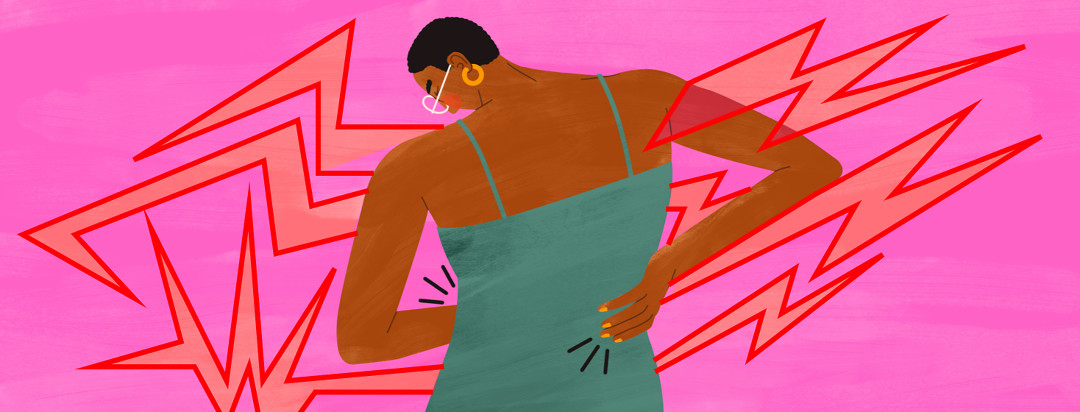Multiple Sclerosis is a Pain
Some medical professionals sometimes use the casual term “LP” as shorthand. It's shorthand for lumbar puncture, previously referred to as a spinal tap, which “is a procedure in which a doctor inserts a needle between two bones of the lower spine to withdraw the liquid that is there.”1 The cerebral spinal fluid that surrounds your brain and spinal cord provide essential information that can help with an MS diagnosis.2 The process sounds simple and easy, and it might be from the doctor’s perspective. As a person who has had two lumbar punctures, the procedures were excruciatingly painful. They were an unwelcome introduction to a multiple sclerosis factor that is a daily part of my life: pain.
I started out with non-MS pain
I didn’t know it at the time, but my first taste of multiple sclerosis-associated pain would start with a sizzling hot silver nitrate cauterization. This was followed by a chunk of nasal packing jammed up my nose like I was the victim of a mad scientist a sci-fi movie. This was three days before my initial MS diagnosis. I had it, I just didn’t know.
The pain of a fluoroscopy-guided lumbar puncture
Once it was determined that I likely had multiple sclerosis, I was scheduled for an in-office lumbar puncture. Sitting in a chair with my back exposed. That was how I felt the worst pain of my life. Unfortunately, no fluid could be drawn. I was re-scheduled for another LP, but this one was to be fluoroscopy-guided. I was lying face down on a hospital table while a radiologist literally dug around my spine when I experienced the worst pain of my life. It replaced the old first place lumbar puncture.
These pains prepared me for the time when my actual multiple sclerosis pain arrived.
Four different types of MS pain
When I begin researching multiple sclerosis, its symptoms, and possible treatments, I always read about pain. The multiple sclerosis community has never shied away from talking about pain. Pain is a reality of life for a large portion of our chronic illness group. It has been proposed that pain associated with multiple sclerosis can be categorized in four major groups:
- Continuous central neuropathic pain
- Intermittent central neuropathic pain
- Musculoskeletal pain
- Mixed neuropathic and non-neuropathic pain
We describe our MS pain differently
These categories are academic and dry ways of describing negative physical experiences. Many of us with multiple sclerosis are all too familiar with at least one category or maybe more. We know pain because we are asked to describe it over and over. We know throbbing pain. We know stabbing pain. We know muscle pain. We have our own very descriptive vocabulary of words for pain. It is estimated that the pain prevalence in MS patients to be 63%.4 Those of us who live with daily pain have a persistent reminder that we have a chronic illness. No matter what I’m doing, there is the silent discomfort of tensed muscles. Off and on, it is the odd deep down ghostlike neurological pain inhabiting my arms. And then, there is the surprise shock of pain of a locking muscle.
I wasn’t ready for the muscle spasms
As much as I thought prepared for pain, I was not ready for my first spasm. I can’t recall the actual moment. It was a twinge that began a daily baclofen dosage for prevention. The first time I felt real, sustained pain, it was the MS hug. The strength of the muscle pain left me breathless as I felt an imaginary python squeezing my midsection. This pain was MS pain. It wasn’t pain from the outside from a needle or a cauterized nose. It wasn’t pain inflicted upon me. This was pain my body inflicted on itself.
A few years have passed. I am still not totally at one with pain. I am not yet evolved enough to go with the flow and release myself to it. I am not fighting the pain anymore. I want to grow to be at peace with that which I cannot change.
I haven’t got time for the pain
Until we find a cure and regardless of category, my multiple sclerosis pain is here to stay. I have had to find a way to not just live with the pain, but to thrive despite it. I have purposefully created a pain action plan. I devise a strategy for each kind and try to stick with it when it comes. I have given myself permission to say “ouch” out loud with shame. If it’s a bit more than that I don’t chastise or judge myself. Most of my techniques involve breathing deeply and promising myself that this pain will pass. If you have any suggestions for how you manage pain, please share it! You could help other members of our community. As it was once said, “We have pain. Pain does not have to have us.”

Join the conversation